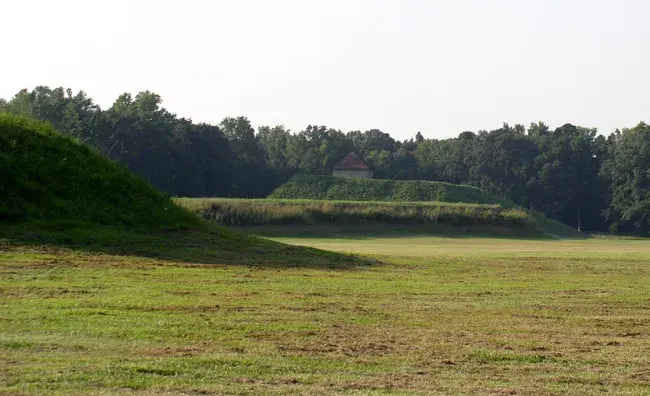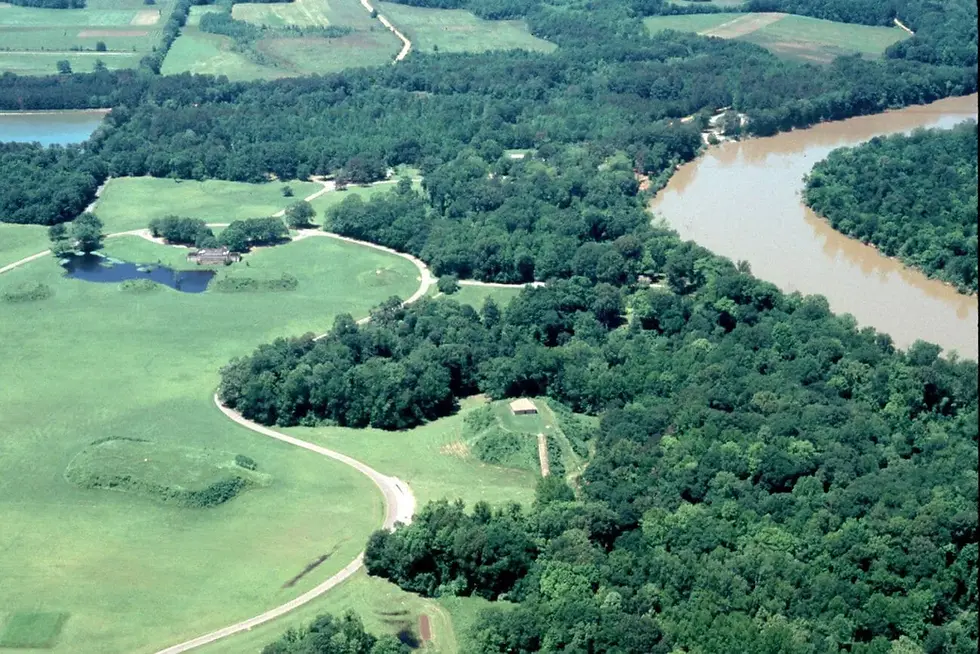Unearthing Moundville, Alabama
- Emily Expedition

- Apr 20
- 4 min read
Located in west-central Alabama, Moundville is a sprawling prehistoric site that once served as a major center of Mississippian culture. Over 900 years ago, this city buzzed with political, spiritual, and economic life, marked by towering earth mounds, intricate pottery, and evidence of a society built on inherited leadership and wide-reaching trade. What looks like a peaceful field today was once a carefully planned community filled with meaning, status, and ceremony.
So what can a bunch of giant dirt mounds tell us about power, religion, and trade? Let’s dig in!
A City Made of Mounds

Sometime around the year 1050 CE, people began building Moundville on a high ridge by the Black Warrior River. They picked a smart spot, it didn’t flood and was easy to protect. Over time, they created 32 large mounds, many shaped like flat-topped pyramids, all surrounding a giant plaza in the middle of town.

The tallest mounds, called Mound A and Mound B, weren’t just for show. They had buildings on top, which were built, burned, and rebuilt again and again. These were a part of a spiritual or ceremonial cycle. Each new layer likely symbolized starting fresh.
Who’s on Top? Literally.

Moundville wasn’t a place where everyone was treated equally. The way the city was laid out tells us that some people had more power than others. The leaders, or elite class, lived on top of the biggest mounds, while regular families lived in smaller homes spread out around the city.
Archaeologists discovered this inequality by studying burials. Some graves were packed with fancy items like carved stones, shiny copper pieces, and decorations made of mica. Others had almost nothing. Leadership was passed down through family lines, and the whole city was designed to reflect that social order.
Clues from Homes and Graves

The houses at Moundville were made from woven sticks and clay, known as wattle-and-daub. Some were built by digging a shallow hole first, while others had upright posts set into the ground. These building styles might be tied to family groups or social class.
Around the city, there were smaller farm homes likely lived in by extended families. Burial sites also give us clues, like the two adults with dwarfism who were buried near each other. They shared a unique skull shape caused by cradleboarding as babies, and they were probably related. These details help archaeologists understand family and social connections.
Long-Distance Connections
Even though Moundville was in Alabama, the people who lived there were connected to faraway places. Archaeologists found materials like mica, greenstone, galena, and copper, none of which are local. These goods must have come from trade routes stretching across different regions.
Once the materials arrived, local craftspeople turned them into tools, decorations, or ritual items. These finds show that Moundville was part of a much bigger network of trade, and that spiritual beliefs and economic systems were often connected.
Signs of Spiritual Life

Religion played a big part in life at Moundville. Pottery found at the site is decorated with birds, snakes, and other animals, many with parts from different species. These probably had spiritual or symbolic meanings and might have told sacred stories.

Around the year 1250, something shifted. Fewer people lived in the city, but the number of burials increased. Moundville turned into a necropolis, a large burial place controlled by the elite. It became more about honoring the dead and holding on to tradition than everyday life.

Why It All Changed
By 1300, the population of Moundville started to shrink. There are a few theories why, maybe the soil wore out, maybe there was no longer a need for a walled city, or maybe the leaders decided to make the area sacred by clearing people out.
By 1400, most of the mounds were empty, and only a few people remained. The once-busy city became a quiet, sacred place mainly used for ceremonies and burials.
Moundville Today
Now, Moundville Archaeological Park is run by the University of Alabama. Visitors can explore the mounds, walk the trails, and check out the amazing museum, which includes real artifacts, 3D displays, and even a life-size model of a Native healer in a traditional earthlodge.
Whether you love ancient history, archaeology, or just exploring places with deep stories, Moundville is a must-visit!
References:
"Moundville Archaeological Park." Encyclopedia of Alabama, Alabama Humanities Alliance, https://encyclopediaofalabama.org/article/moundville-archaeological-park/ . Accessed 20 Apr. 2025.
"Wattle and Daub." Lowimpact.org, https://www.lowimpact.org/categories/shelter/wattle-daub/ . Accessed 20 Apr. 2025.
"Ancient Site." Moundville Archaeological Park, University of Alabama Museums, https://moundville.museums.ua.edu/ancient-site/ . Accessed 20 Apr. 2025.




Comments